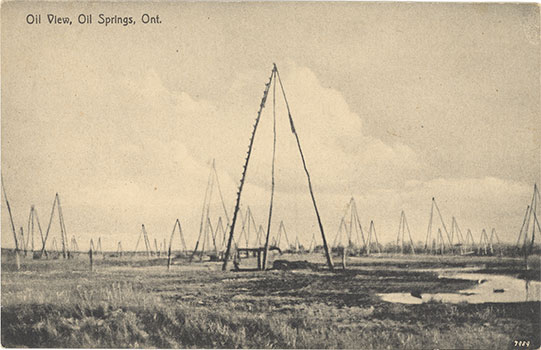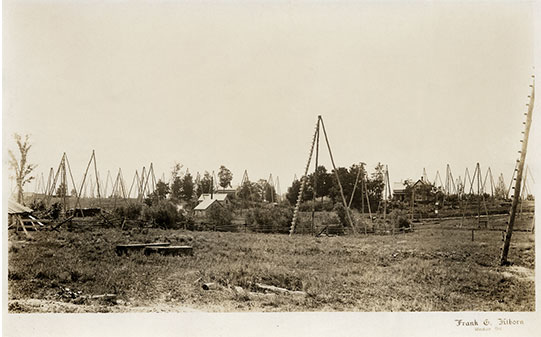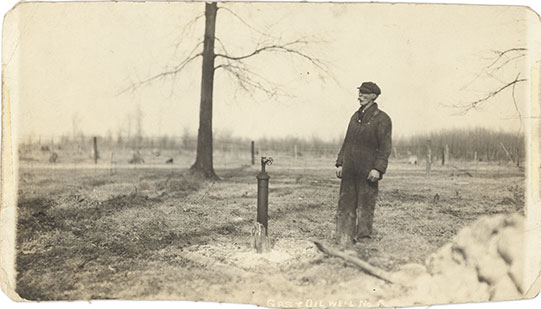Historical Context
In the mid-1800s European settlers started to look at petroleum with an eye to commercial use. Nova Scotian Abraham Gesner invented kerosene for lighting fuel using oil from shale and coal. From there, he developed kerosene from crude oil which was much cheaper and easier to extract.
As demand for lamp fuel grew, people began to mine bitumen and oil pools. James Miller Williams hand-dug the first commercial oil well in North America in 1858. It was in an area known as Black Creek, in Canada West. Today this region is called, Oil Springs, Ontario, Canada.
Interest in making money in oil grew rapidly. This attracted many speculators to the region. But the real boom came in 1862. John Shaw struck an oil gusher. It flowed above the treetops for days before workers brought it under control. Everyone wanted to bring in a gusher. In fact, 31 more gushers were struck that year! The Village of Oil Springs’ population swelled from 300 to 4,000 people by 1865.
Due to the heavy clay soil in the area, horse and oxen teams sometimes got bogged down. Drilling tools would be off-loaded, and a well would be drilled on the spot. A reporter of the day stated wells were ‘going down every 100 yards.
The urgency of the boom meant that many operators built flimsy cribbing and casing. This would later lead to crumbling walls and water seeping into well holes.
The oil bust would come sooner than many would have expected. In 1866, due to many factors, including disappointing oil production, a potential invasion from Irish Americans, and new wells opening in Petrolia, people fled Oil Springs. Wells were orphaned and abandoned, often with poor or no attempts made to safely fill them in.
Early methods of plugging wells used materials such as wood, clay, and rubble. Today, these materials are considered inferior for this purpose. Cement was not a standard plugging material until 1964.
In Lambton County, by 1860 hundreds of oil wells and derricks had been erected and abandoned and the location of each well not recorded. Oil exploration was happening throughout Ontario as far east as townships near Ottawa, and south along the coast of Lake Erie. Few records were made for these wells; no location, drilling methods, or depths were recorded. The Ontario Bureau of Mines, established in 1891, estimated there were 10,000 operating oil wells in Ontario by 1900. There were only records for roughly 1,500 wells. Well records were not mandatory until 1919.
Today there are an estimated 27,000 known inactive oil and gas wells in Ontario. The Ministry of Natural Resources (MNR) suspects there are twice as many wells without records or are lost to history. Globally, there are probably 29 million abandoned wells. Many oil and gas wells are located on private land where landowners may not be aware of their presence.
The Government of Ontario is supporting municipalities and landowners by raising awareness of legacy oil and gas wells in their communities.





 Subscribe to this page
Subscribe to this page